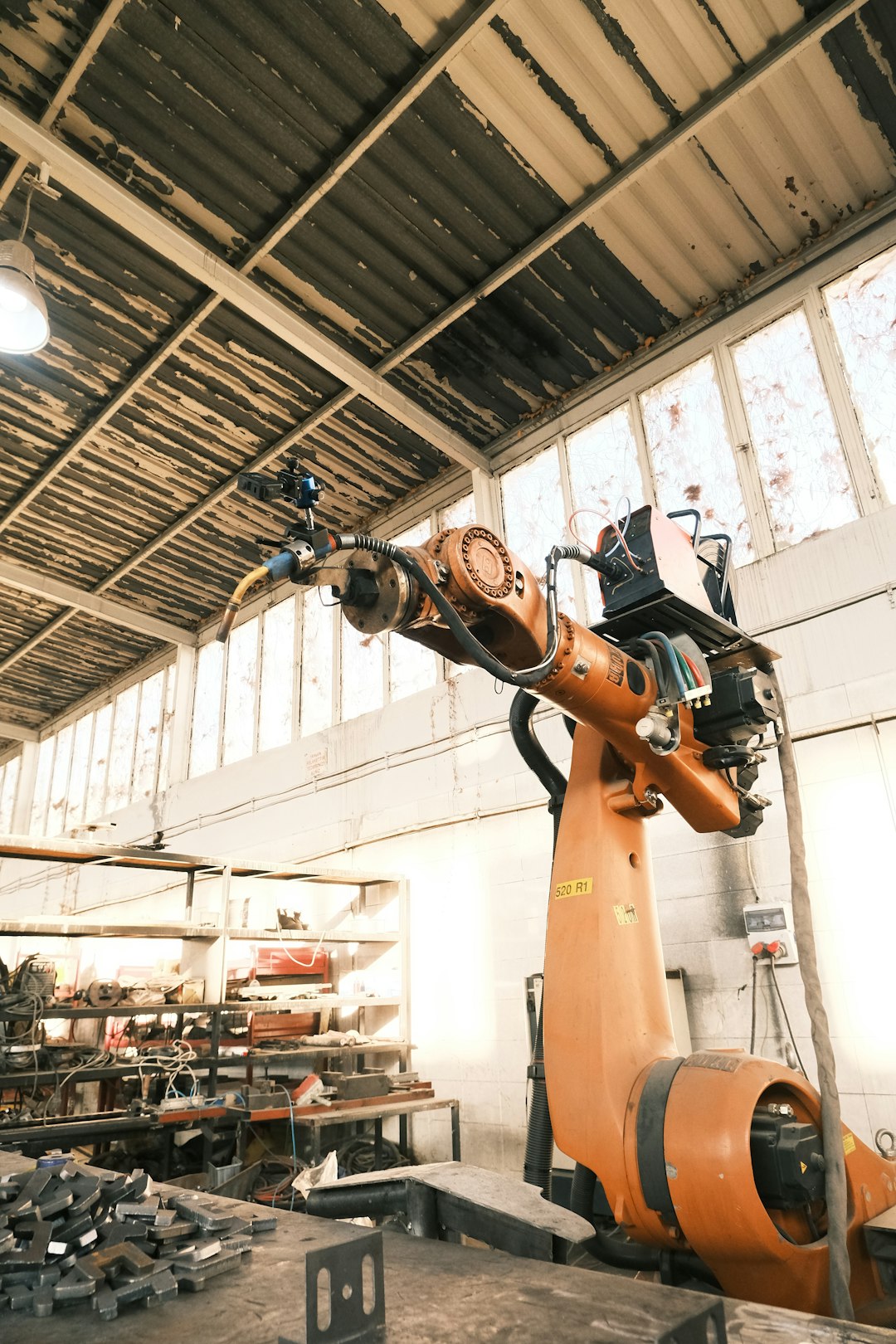 Photo from Unsplash
Photo from Unsplash
Originally Posted On: https://sciotex.com/manufacturing-ai-how-to-use-ai-in-manufacturing/
Manufacturing AI – How AI is Being Used in Manufacturing
Manufacturing AI has become a transformative force across various industries. In recent years, the top industries using AI have gained significant momentum, reshaping the way manufacturing processes are conducted. These advanced systems leverage computer vision and machine learning algorithms to analyze and interpret visual data, providing unparalleled efficiency, accuracy, and productivity on factory floors. This article explores the applications, benefits, and future prospects of manufacturing AI systems.
1. Using AI for Quality Control
One of the primary applications in manufacturing is AI quality control and inspection. Traditional inspection methods are time-consuming, prone to human error, and limited in their ability to identify minute defects. AI vision systems, on the other hand, can perform real-time, high-speed inspection with remarkable precision. By capturing and analyzing visual data, these systems can detect even the smallest flaws, ensuring that only products meeting the highest standards are released into the market. Moreover, AI vision systems can identify defects at various stages of production, allowing manufacturers to rectify issues promptly and minimize waste.
2. Using AI for Defect Detection and Prevention
Beyond quality control, AI vision systems play a vital role in defect detection and prevention. These systems can be trained to recognize specific patterns, shapes, and textures associated with defective products. By constantly monitoring production lines, AI vision systems can quickly identify deviations from the norm, enabling manufacturers to take immediate action to rectify the issue. This proactive approach helps prevent faulty products from reaching the market, reducing customer complaints and minimizing recall costs. Additionally, AI vision systems can analyze the root causes of defects, providing valuable insights for process optimization and continuous improvement.
3. Using AI for Counting and Sorting
In modern manufacturing, the integration of Artificial Intelligence has significantly transformed the efficiency of counting and sorting processes. AI-powered systems, equipped with advanced computer vision algorithms, seamlessly analyze and categorize diverse items on production lines with unparalleled accuracy. This not only expedites the manufacturing pace but also minimizes errors, enhancing overall product quality. The real-time adaptability of AI allows for dynamic adjustments, ensuring a flexible and responsive approach to evolving production requirements. As a result, manufacturers experience heightened productivity, streamlined operations, and reduced costs, emphasizing the pivotal role AI plays in optimizing the intricacies of counting and sorting within the manufacturing landscape.
4. AI Intelligent Robotics and Automation
AI vision systems are revolutionizing robotics and automation in manufacturing. By integrating AI vision with robotic systems, manufacturers can create autonomous robots capable of performing complex tasks with exceptional accuracy. These robots can visually perceive their environment, recognize objects, and adapt to changes in real-time, making them ideal for assembly, packaging, and material handling tasks. AI vision systems enable robots to navigate unstructured environments, identify objects, and precisely manipulate items, reducing the need for human intervention and increasing overall productivity.
5. Inventory Management and Supply Chain Optimization
Efficient inventory management and supply chain optimization are crucial for manufacturing success. AI vision systems contribute significantly to these areas by enabling real-time monitoring and analysis of inventory levels, stock movement, and supply chain processes. These systems can accurately track and identify products, improving inventory accuracy and reducing the risk of stockouts or excess inventory. AI vision systems can also assist in optimizing warehouse operations by automatically identifying and locating items, improving picking and packing processes, and ensuring efficient storage allocation.
6. AI Can Enhance Worker Safety
AI vision systems contribute to ensuring worker safety and promoting ergonomic practices in manufacturing environments. These systems can detect and analyze potential safety hazards, such as equipment malfunctions, improper tool usage, or unsafe working conditions. By providing real-time alerts and warnings, AI vision systems can help prevent accidents and protect workers from harm. Additionally, these systems can assess ergonomic risks by analyzing workers’ postures and movements, enabling proactive interventions to reduce the risk of musculoskeletal disorders and injuries.
Manufacturing AI systems have emerged as a game-changer in the manufacturing industry, transforming traditional manufacturing processes and paving the way for more efficient, accurate, and productive operations. From quality control and defect detection to intelligent robotics and supply chain optimization, these systems offer a wide range of applications that streamline manufacturing operations and improve overall productivity. By harnessing the power of computer vision and machine learning algorithms, manufacturers can achieve higher quality products, reduce waste and recalls, enhance worker safety, and achieve better customer satisfaction.
As technology continues to advance, manufacturers using AI will evolve further, leveraging advanced algorithms, deep learning, and sensor integration to provide even more sophisticated solutions. However, it is crucial to address ethical considerations, such as data privacy and algorithm bias, to ensure the responsible and equitable deployment of AI vision systems. With the right implementation and ongoing research and development, AI vision systems have the potential to revolutionize manufacturing and drive the industry towards a more efficient, sustainable, and competitive future. Learn More about how Sciotex can help you with AI Visual Inspection.

